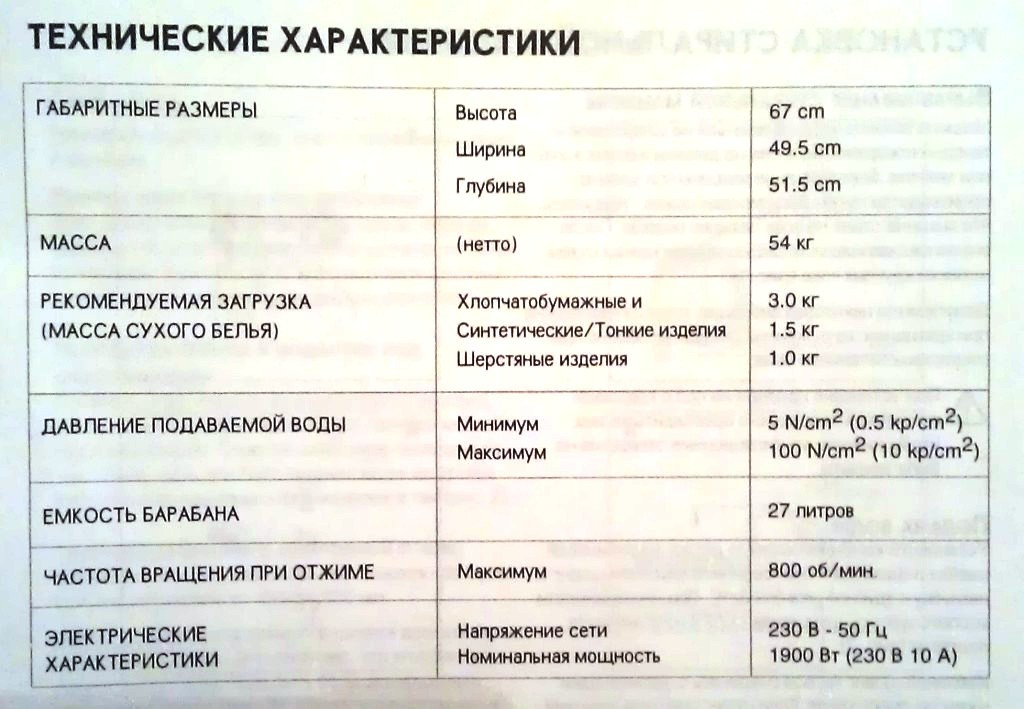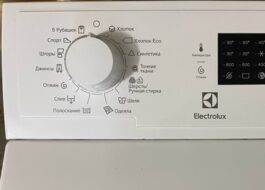How to properly place laundry in an automatic washing machine
 If you don’t know how to properly fold laundry into a machine, you can get into a lot of trouble. In the best case, the washing machine will slow down at the very beginning of the cycle, and in the worst case, it will not finish the wash at the spin stage and will display a corresponding error. All this will happen if you load too few things into the drum, or, conversely, give the machine an excessive load. But it’s better not to experiment, but to study the rules for laying out the washing machine drum in advance.
If you don’t know how to properly fold laundry into a machine, you can get into a lot of trouble. In the best case, the washing machine will slow down at the very beginning of the cycle, and in the worst case, it will not finish the wash at the spin stage and will display a corresponding error. All this will happen if you load too few things into the drum, or, conversely, give the machine an excessive load. But it’s better not to experiment, but to study the rules for laying out the washing machine drum in advance.
Getting things ready
Properly putting laundry into the drum begins with storing, inspecting and sorting dirty items. Not everyone knows that soiled and stale clothes can only be stored in containers with ventilation holes, and should not be allowed to get wet or stored for a long time. If you neglect the listed rules, mold will appear, an unpleasant odor will appear, and stubborn and old stains will be difficult to remove. But you cannot take dirty things out of the basket and immediately put them in the tank. You must remember the following steps.
- Plan the conditions for the upcoming wash - temperature, spin force.

- Divide existing clothes into lots depending on the type of linen (synthetics, cotton, delicate fabrics).
- Set aside white and light-colored items from colored and black ones.
- Assess the degree of contamination of items, since heavily soiled items will need to be pre-washed.
- Turn pillowcases, duvet covers, knitwear and terry items inside out.
- Collect hair and animal fur from things.
A mandatory step should be checking pockets and folds.Sharp, hard, heavy and small objects, keys or coins, if they get into the drum and tank, will lead to mechanical damage, shaft wedge or clogging of the drain system. Therefore, zippers and buttons are always fastened, and underwear, scarves and children's socks are placed in special mesh bags.
How many things to load?
Once your things are sorted, you can start loading them. But there is no need to rush - you need to remember exactly what the maximum permissible weight of dry laundry is for a particular model. It is indicated on the body of the machine or written in the technical data sheet of the washing machine.
It is worth understanding that the indicated 6 or 4 kg is the weight of cotton items. Other types of fabric may be slightly heavier or bulkier. For example, when wet, a wool shawl becomes heavier than a cotton suit of similar dry weight. Also with volume: 1 kg of organza or veil will take up more space than 1 kg of rough work clothes.
The machine will detect overload or underload during the spin cycle, and if the deviation from the norm is too large, it will stop working for safety reasons.
 Therefore, manufacturers recommend not to waste time and effort on constant weighing, but to be guided by the fullness of the drum. The maximum load assumes a full tank without compaction, so it is enough to load things into the machine, leaving a small space as a reserve. The exception will be synthetic and woolen fabrics, which should occupy no more than ½ of the drum in the first case and 1/3 in the second. There is another option - weigh the laundry and calculate 10 liters of water for each kilogram.
Therefore, manufacturers recommend not to waste time and effort on constant weighing, but to be guided by the fullness of the drum. The maximum load assumes a full tank without compaction, so it is enough to load things into the machine, leaving a small space as a reserve. The exception will be synthetic and woolen fabrics, which should occupy no more than ½ of the drum in the first case and 1/3 in the second. There is another option - weigh the laundry and calculate 10 liters of water for each kilogram.
If you do not control the weight of the loaded items, the owner will not be happy with the consequences.Overloading is fraught with internal mechanical damage due to the drum being too heavy, and incomplete loading will lead to powerful vibrations, microcracks and imbalance. True, many modern models provide the ability to wash at half load, but most budget washing machines have a strict limit - at least 1-1.5 kg of dry laundry.
Let's calculate the loading rate
Let us repeat that each washing machine has its own loading rate, and the maximum weight must be indicated in the accompanying documentation when purchasing a model in a store. The maximum value depends on the design, dimensions and type of machine. So, the units standardly have the following capacity:
- compact or portable (most often tabletop) - from 1.5 to 3 kg of dry items per cycle;
- narrow machines with a depth of up to 80 cm - 3-6 kg of laundry;
- full-size ones with a depth of 85-90 cm are designed for simultaneous washing from 5 to 10 kg.
The larger the capacity of the machine, the more expensive its maintenance.
Most often, buyers choose “universal” capacity machines with a maximum loading weight of 5-7 kg. This run-up allows you not to store laundry for a long time and deal with accumulated items in a couple of cycles. Knowing exactly the capacity of your machine, you can approximately calculate the weight of items ready for loading. A list of the average weight of popular fabric products in everyday life will help with this:
- three-piece bed linen set – 1.4 kg (sheet – 500 g, duvet cover – 700 g, pillowcase – no more than 200 g);
- bath towel – 700-800 g;
- waffle towel – about 150 g;
- tablecloth 2*2 m – about 500 g;
- men's shirt – 350 g;
- women's blouse - 70-100 g;
- children's T-shirt – 100 g;
- socks 1 pair – 50-60 g;
- jeans – 600-700 g;
- handkerchief – about 20 g;
- flannelette blanket or blanket – over 1 kg.
Using simple mathematical calculations, you can scatter the accumulated laundry into several washes that are safe in weight. If an error was made, the machine will report the shortfall/overshoot by freezing or suddenly stopping the program in the middle of the cycle. To eliminate the imbalance that has arisen, you will need to turn off the machine, wait until the hatch door is unlocked, open the drum and straighten the crumpled laundry, taking some things out or reporting them if they are missing. Then close the door tightly and start the mode from the very beginning.
Before loading items into the washing machine, it is worth assessing their weight and the capabilities of your machine. Then the washing will be completed on time and will not bring unnecessary hassle.
Interesting:
1 reader comment





















Thanks for the consultation! The material is well structured and easy to understand.